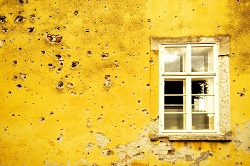Exposing state crimes and human rights abuses through architecture
Civilian casualties of conflict in urban areas are on the rise. This is because the traditional conception of an arena of war no longer applies. Today, most conflicts take place in cities – urban battlefields that are data- and media-rich environments. With partial funding from the EU through the FAMEC project, the independent agency Forensic Architecture (FA) is harnessing the potential of today’s technological advancements to investigate state crimes and human rights abuses committed in cities and buildings. In the past, evidence on war crimes and human rights violations was based on interviews conducted long after the event. But modern technology has changed this. With the widespread use of digital recording equipment, satellite communication, remote sensing technology and the internet, vast amounts of data are now available to provide novel types of evidence when crimes are perpetrated. In an interview given to ‘Architectural Record’, FA founder and director Eyal Weizman explains the role that architecture plays in his agency’s work. “[A]rchitecture is a place we depart from; it’s more like an airport than a prison. To provide architectural evidence of, say, a destroyed building in Syria, we are often unable to actually go on-site. We need to locate, verify, analyse, and stitch together user-generated content in order to make a narrative.” FA uses the images uploaded by people at the site of a conflict to recreate the crimes it’s investigating. To achieve this, it uses models, drawings, maps, web-based interactive cartographies, films and animations that require the wide-ranging expertise of its team. FA has developed a new tool that makes it possible to map complex events such as conflicts, protests, or crises as they unfold, using photography and satellite imaging. Called PATTRN, it’s an open-source platform that allows its users to share and collate first-hand reports of conflicts and to make sense of scattered information. The researchers investigate violent events around the world to provide new kinds of evidence for international prosecution teams, political organisations, non-governmental organisations and international institutions such as the UN. The FA team’s projects include researching torture centres in Cameroon, counter-investigating a secret agent’s testimony in relation to the murder of a young man of Turkish origin in Germany, and recreating a secret Syrian detention centre based on descriptions by its survivors. Another investigation concerns the murder of 6 people and disappearance of 43 students in Mexico when local police attacked a school. FA’s investigations range from events within war zones to politically and racially motivated violence that occurs outside the scope of military conflict. Its work has made it possible to contest accounts of events given by state authorities. This has led to official inquiries and tribunals. “We think that there’s great importance in finding new ways of producing solid evidence on which to base our discussions and our political decisions,” says Weizman. “We plan to continue to use architecture as an off-place to understand, analyse, and intervene in political situations worldwide.” FAMEC (Forensic Architecture: The Media Environments of Conflict) is further developing the field of forensic architecture by exploring new modes of documentation and analysis and how they have changed the relationship between conflict and built spaces. FA will be carrying out new forensic work in Syria, Israel, Palestine and Brazil, in collaboration with leading human rights organisations. For more information, please see: Forensic Architecture website
Countries
United Kingdom



